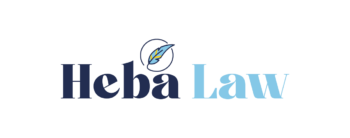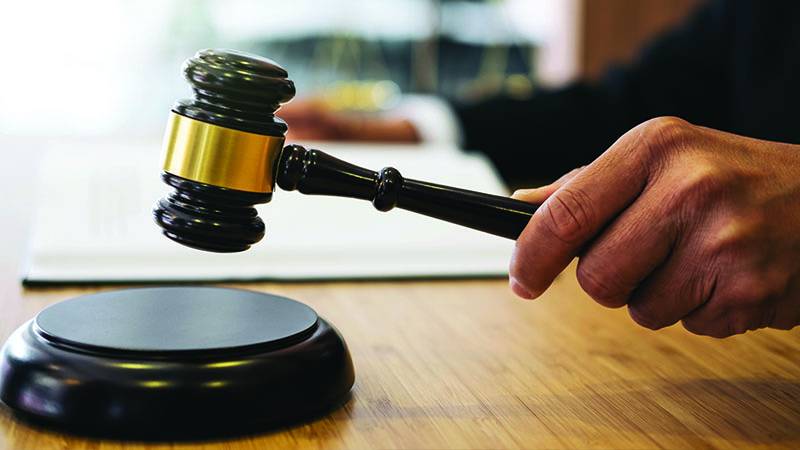the Frye and Daubert standards act as gate‑keepers, shaping expert testimony where law meets science and policy. Its admissibility can tilt a trial’s balance; civil lawsuits, criminal prosecutions, even regulator actions feel that shift. American courts for years have leaned on just two main rule‑books—first the Frye standard, which sprang from Frew v.—and that keeps shaping what evidence counts, therefore shaping each trial. 1923, United States did its thing, then Daubert pops up in Daubert v., it really flips the way courts look at evidence. It’s Merrell Dow Pharmaceuticals, Inc., right? * In 1993, it actually came out. Both aim to shield the fact‑finder from shaky science; therefore they’re different in method, in belief, and in the impact on expert witnesses. Here I dig into why each rule matters—tracking how it changed, what it really means, and then asking does it shape how experts prep, present and get heard; therefore the impact shows up clearly. So, if you put Frye’s “general acceptance” rule side‑by‑side with Daubert’s “reliability and relevance” test, you see each one drive what can be shown in court, push lawyers and experts to act a certain way, and even hint at the tug‑of‑war between a judge’s control and science’s freedom. Please provide the original sentence you’d like me to rewrite. Did you know the Frye rule sprang from a 1923 court case that argued whether a “spirit test” could be admitted to prove intoxication? A quirky lawsuit, really. Therefore, the New York Supreme Court held admissible scientific evidence must generally accepted in its field. If the scientists who actually use the method say it’s OK, therefore the court just lets it in, no further look. – Burden of Proof – Therefore the expert must tie their words to a set of facts that fellow scholars already gave a thumbs‑up to; no wiggle room. – Predictability – After a method becomes widely accepted its legal weight freeze; therefore later lawsuits rarely look again at the science. Three decades later, the university—did it finally shift to Daubert, or did it stay stuck in old ways? Supreme Court? faced Daubert: a case examining cancer research on animals. The Court said no to relying just on general acceptance; therefore it pushed for a flexible, multi‑factor inquiry based on the Federal Rules of Evidence (FRE 702). Daubert’s provisional reliability test (basically covering point 1). If you can try to prove it wrong, therefore it’s testable (or simply falsifiable), right? Nothing to rewrite there. First the reviewers glance over it, therefore, if it passes—suddenly it ends up in print. Third, we get that main point. Therefore we notice error rates, some known, others maybe only possible. The fourth point, it catches the eye as the next idea. Exists standards that control the methodology, yeah? The fifth point? just the numeral five. Most people accept it, yet that’s only a side point. Therefore the judge now acts as a gatekeeper, it must judge the scientific validity and the relevance of expert testimony. > The courts now push farther— they won’t just accept what the field says; they must also spell out why their methods really work, therefore proving the approach is solid. ## Does the second point not matter more than we think? Frye, a positivist, treats science as steady; so the legal system just grabs the professional community’s verdict, using it as a quick shortcut. – Daubert leans on critical realism: science isn’t fixed; it’s examined, then re‑examined whenever new evidence shows up. Basically the trial judge’s job is to guard evidence; with Frye it stays a simple, almost lazy check – does most people accept it? – while Daubert forces the judge to poke around a bit more, asking if the method truly works, therefore the scrutiny ramps up. We need to assess the method, check whether it’s truly relevant, watch for bias, and note any extra factors that might sway the results. | Judicial Expertise Required | Low — the acceptance status? merely a factual note. | Judges need understand science; therefore Daubert factors get applied. Flexibility? maybe we roll with it; rigid meanwhile, lets old consensus call the shots. | Adaptive – judges might give extra weight to some factors, depending on the specifics of each case. Daubert spikes the judge’s role, so experts must defend how they work, list error rates, and link their findings right back to the legal issue; therefore they train like they’re under cross‑examination. Under Frye the main focus leans on a solid proof pedigree, that’s why the whole strategy rides on that evidence. – Frye asks the expert to prove they belong to a recognized field; usually the qualifications alone enough. – Daubert says the expert must lay out their method; they also need to point out where the data came from and note any guesses they made. The pro can’t skip that a voir‑dire will quiz the soundness of the plan, therefore they have to be ready. According to Daubert, the report have to clearly state the hypothesis and simply describe the design, therefore the reader knows what’s being tested. – Statistical analysis – confidence intervals shown, error probability examined. – Peer‑review status and any standards (for example, are they set?) governing the technique, ISO and ASTM set the rules therefore the process follows them. In a Frye‑run jurisdiction, therefore the report stays brief (it simply says the method is trusted by the community, not the detailed internal checks). Daubert focus, lawyers filing pre‑trial motions to cut out expert testimony; cases settle early or a new expert is brought in. – Frye jurisdictions usually skip the pre‑trial fights over how tests are done; however, when a case moves to appeal they often run into fresh doubts about whether the chosen test meets the required standard. Therefore for attorneys and specialists the everyday rules tell them to choose: they’re either pouring effort into a tight Daubert check or showing the Frye track‑record of acceptance. Section four—where the next point subtly appears. Daubert tightens review of experts, therefore testimony feels more trusty and facts you uncover end up clearer. However, it could raise barriers for fresh scientific methods that lack a solid trust record, yet they often explain things far clearer. Frye keeps fresh methods reachable after they clear acceptance test, yet it might still pull stale or shaky science because the consensus drags behind new findings. Daubert puts judges into needing science know‑how, so the way the rules end up different across districts. Relying on a set metric? The results turn out uniform, yet you give up any flexibility. Therefore, the debate surfaces: should courts hug predictable rule‑of‑law—like you follow the same school schedule every day—or pivot to adaptive discernment, shifting whenever a new case throws a curveball? Both standards tug at the give‑and‑take that ties courts to labs: every new ruling pushes a scientist’s next step, and every fresh study can push the law back. Daubert’s call for error rates and transparent methods forces tighter validation; it may even speed up how each discipline fixes its standards, don’t you think? So Frye’s “acceptance” gate might lock us into a safe‑old mindset; fresh legal tech? It just sits there, waiting longer to be tried. We’ve hit number five just now. ## Comparative Jurisprudence
5.1 Federal Versus State Courts
The Supreme Court’s Daubert ruling? It forces every federal court to follow it. Therefore many states still keep Frye; they simply keep it on the books. Say you examine California or New York, then maybe flip to a hybrid way (for example). Texas likes reliability, yet they constantly stress acceptance. This patchwork pushes lawyers to chase courts that fit the proof they need; that’s basically a forum shopping move. In the UK‑style common‑law system, judges uses a Daubert‑type “relevant expertise” test found in the Civil Procedure Rules, while civil‑law countries—like Germany—use another rule, more about codes than experts. g., Germany) embed expert tribunals straight into court work, skipping the Frye/Daubert divide. So, the comparison tells us the American bifurcation of standards sticks out because the US courtroom game leans on experts chosen by the parties themselves. Could you please provide the original sentence you’d like rewritten? Future Trajectories
6.1 Technological Evolution
AI, machine‑learning models and big‑data analytics? They put Frye and Dauben‑t under pressure. They haven’t built a wide acceptance base yet; therefore, the results still come out pretty solid. Courts may tweak algorithmic transparency rules (mirroring Daubert’s error‑rate factor); moreover, “acceptance” could shift to industry standards instead of only scholarly consensus; what does that even mean? ### 6.2 Scholarly Proposals
Legal scholars say “let’s have a Unified Standard,” blending Frye’s simple view with Daubert’s strict test; therefore a tiered gatekeeping guide that lists each step is proposed. Preliminary Acceptance Test – a brief check, kind of like the Frye rule, you know? 2… simply that. Reliability Audit — does it simply glance at the Daubert factors to see if they seem trustworthy? Three’s the point I’m getting at, you see? So, does this case fit its context? (a specific‑fit review) If you blend predictability with real science, therefore you end up give experts a clearer road for what’s admissible. ## Conclusion
Frye rule and Daubert rule both sit inside US evidence law, but they’re not the same.
One looks at tradition, the other at scientific reliability – how do they differ?
They kind of fit together, yet stay separate. Frye acts as a past‑based, community check that tells judges a method is socially accepted; therefore Daubert works like a live gate, asking if the science behind expert advice holds up and really matters in court. Therefore, the rule that guides experts decides the weight they must carry – it shapes their report format and pushes lawyers into a particular tactic. Because Daubert’s a big name in federal courts, experts have to make their reports look a lot more careful they’ve got to show clear proof and they must break down any mistakes point by point, therefore the whole process just got tougher. Many state courts still hold onto Frye, they keep a simpler threshold so new fields get a chance. Yet that same low bar can pull in outdated science; therefore the risk grows. Do you hear the back‑and‑forth of the standards? That chatter, it reveals a hidden fight: legal certainty demands a tidy rulebook, scientific progress pushes for fresh experiments. Research keeps moving outward, especially with computers crunching huge data, so the courts have to keep re‑writing the rules that decide who gets to judge. Goal’s steady—whether a hybrid framework or just tweaking the old standards, expert testimony, the voice of science inside the courtroom, have to be reliable and relevant, therefore justice rides.

